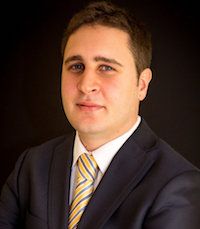Hepatitis C Reinfection Rates Greater in Drug Users Despite DAAs
Investigators also found that opiate agonist therapy could have a positive effect in limiting reinfection rates after patients achieve SVR.

Carmine Rossi, PhD
A population-based study of 1.7 million-plus individuals tested for hepatitis C virus (HCV) has found further evidence that reinfection rates are elevated in people who inject drugs (PWIDs), even after being successfully treated with direct-acting antiviral (DAA) therapy.
The findings from the research team at the British Columbia Center for Disease Control and the University of British Columbia (UBC), presented at the Association for the Study of Liver Diseases (AASLD; The Liver Meeting) in San Francisco, CA, also suggest that opiate agonist therapy (OAT) could be a viable combatant for reinfection rates.
Led by Carmine Rossi, PhD, of UBC, investigators analyzed the clinical outcomes of HCV patients in Canada treated with DAAs between January 2014 and July 2017. Qualified patients had achieved sustained virologic response (SVR) and had been subjected to at least 1 subsequent HCV RNA test for reinfection. They defined reinfection as a single positive RNA test after reaching SVR.
Persistent reinfections were defined when individuals did not spontaneously clear. Investigators also assessed for both current PWIDs—<3 years before SVR—and former PWIDs—≥3 years before SVR—using an algorithm dependent on physician diagnoses and hospitalization codes. They then calculated crude reinfection rates per 100 person-years (PYs), and modeled age- and sex-adjusted incidence rate ratios (IRRs) using Poisson regression.
Among the approximate 1.7 million initially assessed, 4114 met cohort inclusion. A majority of patients were found to be male (65%), born prior to 1965 (83%), and to have had a history of injection drug use—either as a current (21%) or former (44%) PWID.
Just 40 reinfections (33 persistent) were found over 2767 PYs, indicating a reinfection rate of 1.45 per 100 PYs. Among current PWID, crude reinfection rates were 3.1 per 100 PYs (IRR: 8.0; 95% CI: 2.4-27). Among former PWID, rates were 1.4 per 100 PYs (IRR: 4.2; 95% CI: 1.2-14), while non-PWID reported rates of just 0.3 per 100 PYs.
Looking more specifically at the PWID population, reinfection rates were notably greater among patients aged <45 years (10.4 per 100 PYs) versus those aged ≥45 years (2.0 per 100 PYs). Male PWIDs were more than twice likely to report reinfection (3.8 per 100 PYs) than women (1.7 per 100 PYs).
OAT used ≥28 days since a PWID completing DAA therapy was associated with a reduction in reinfection risk (1.5 vs 2.1 per 100 PYs; IRR: 0.7; 95% CI: 0.1-3.3). However, investigators noted this was a non-significant reduction, and that just 5% of observed PWIDs were found to have used OAT.
In an interview with MD Magazine®, Donna Cryer, JD, Global Liver Institute president and chief executive officer, called the increasing rate of HCV among younger patients due to the opioid epidemic “the biggest negative” in the field in 2018.
Wider implementation of promising treatments such as OAT could make the difference in negating a disease which continues to spread despite there being a cure: DAAs.
“We’re very much outliers in the international health community by not having an elimination goal now that we have a cure,” Cryer said. “This could be the public health success story of our generation, but we really need the administration to come behind us and step up, and help us achieve the goal.”
That said, Rossi and colleagues advised caution: larger sample sizes and a prolonged follow-up would be required in the assessment of OATs for HCV reinfection reduction.
The study, "Hepatitis C Virus Reinfection after Successful Treatment with Direct-Acting Antiviral Therapy in a Large Population-Based Cohort," was presented at The Liver Meeting 2018.